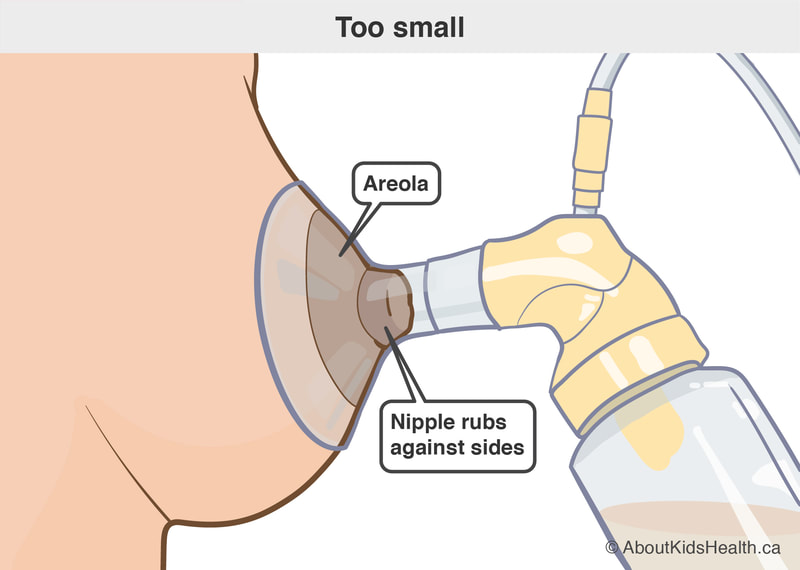BREASTFEEDING: FLANGE SIZING - How do you know if the flange is the right size?
|
If your nipple rubs along the side of the tunnel, try a larger size. If your nipple is centred and moves freely, the fit is correct. If your nipple and an excessive area of your areola are pulled into the tunnel, try a smaller size.
|




















































































































